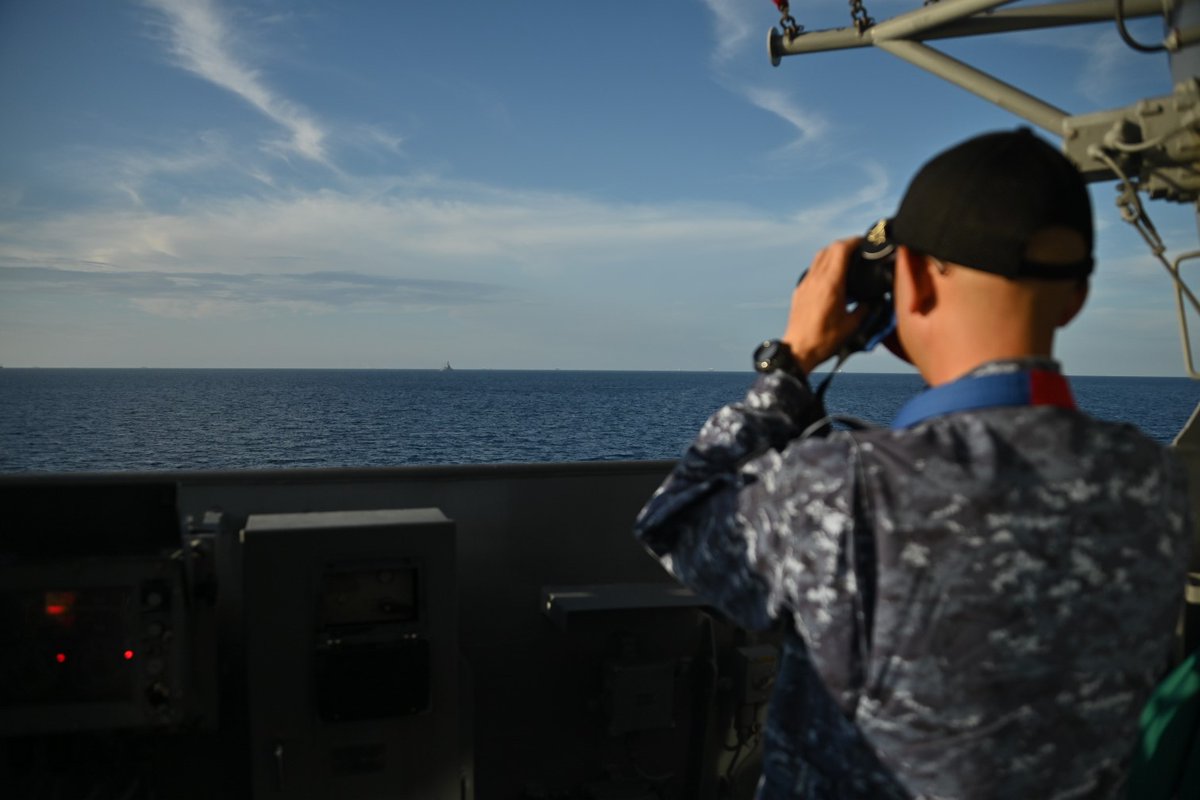The US and South Korea are scheduled to hold large-scale military drills involving stealth fighters of both nations to enhance combined operational capabilities,” Seoul’s Air Force confirmed.
The five-day Vigilant Defense 24 will involve some 130 South Korean and US aircraft amid joint efforts to strengthen defense capabilities against North Korea.
The mega drills will see South Korean F-35A fighters, E-737 airborne early warning and control aircraft, KC-330 tanker transport aircraft, US F-35A and F-35B fighters, and other warplanes, “according to reports. The US could also use FA-18, F-35B, and other aircraft based in Japan for the drills
Noble Caribou
Amid escalating tensions in the Indo-Pacific region, naval vessels from five nations, led by the United States, engaged in the joint maritime exercise known as “Noble Caribou” in the contentious South China Sea on October 23.
The collaborative drill was carried out with the objective of honing tactical capabilities and fostering closer cooperation among the navies of the participating nations in the South China Sea, as stated by the Japan Maritime Self-Defense Force (JMSDF) on X (formerly Twitter).
The multinational naval exercise “Noble Caribou” saw the participation of warships from Japan, the United States, Australia, Canada, and New Zealand. According to the JMSDF, this marks the first joint exercise involving the naval forces of five nations.
In a press release published on October 25, the Japanese Ministry of Defense announced, “On October 23, the 46th Deployment Surface Force Counter Piracy Enforcement (DSPE) Unit, JS Akebono conducted a multilateral exercise “Noble Caribou” in the South China Sea with the United States Navy USS Rafael Peralta, the Royal Australian Navy HMAS Brisbane, the Royal Canadian Navy HMCS Ottawa, and the Royal New Zealand Navy HMNZS Te Mana.
Commander Togawa Hisado, the Commanding Officer of JS Akebono, articulated that the nations taking “art in the exercise are coastal states along the vast expanse of the Pacific Ocean, sharing a commitment to upholding an international order grounded in the rule of law to promote a Free and Open Indo-Pacific.

He explained that the multilateral exercise enhanced their tactical capabilities and collaboration with fellow participating navies. It demonstrated their unwavering determination and capacity to establish a secure environment that rejects unilateral alterations to the status quo through force.
Hisado noted, “We will engage in our upcoming missions while maintaining a posture to respond swiftly to any contingency.”
The Japan Maritime Self-Defense Force (JMSDF) also highlighted that the Self-Defense Fleet remains in a state of preparedness, playing a vital role in upholding peace and stability in the Indo-Pacific region.
Their commitment extends beyond Japan’s defense, as they actively collaborate with allies and like-minded naval forces to promote the vision of a Free and Open Indo-Pacific.
Rising Tensions In The Pacific Region
The multinational naval exercise conducted in the South China Sea occurs against heightened tensions between China and the Philippines due to overlapping maritime territorial claims.
In light of recent events involving Chinese vessels obstructing and colliding with two Filipino boats near a disputed shoal in the South China Sea, the United States has also reiterated its commitment to protect Taiwan in the event of an armed attack following the 1951 treaty.
Up to this point, China has been involved in what is often termed “gray zone” activities, which do not escalate to the level of war, strategically avoiding eliciting either a military response from the Philippines or invoking the US security commitment.
Additionally, the increasing assertiveness of the Chinese military in the Taiwan Strait has raised alarm among the United States and its allied nations.
Consequently, several US lawmakers have called upon their government to expedite the provision of advanced weaponry to Taiwan as a proactive measure to counter potential threats from China.
The island nation has also intensified its initiatives to bolster its defensive capabilities. Taiwan is currently conducting its Changching Exercise, overseen by the 10th Army Corps, which reached its fifth day on October 25
This seven-day live-fire training program primarily focuses on elevating troop combat readiness and refining the command capabilities of military leaders.
Drawing from prior training experiences, as reported by the Military News Agency, the exercise began on October 21 and involved soldiers from various units immersed in a range of simulations, each representing different scenarios aimed at providing a more authentic training experience.
During the exercise, the 269th Mechanized Infantry Brigade has assumed the role of the blue force, while the 99th Marine Brigade has been designated as the red force, engaging in live-fire drills.
Equipped with CM34 and CM33 armored vehicles, the Blue Force directly confronts the Red Force. At the same time, the Blue Force’s psychological warfare unit conducts operations to disrupt the morale of the Red Force, ultimately securing a strategically important position.
The 10th Army Corps has emphasized that incorporating multifaceted scenarios in this exercise is intended to cultivate commanders’ tactical thinking and ability to adapt to ever-changing circumstances, thereby enhancing their overall command abilities.
- Contact the author at ashishmichel(at)gmail.com
- Follow EurAsian Times on Google News